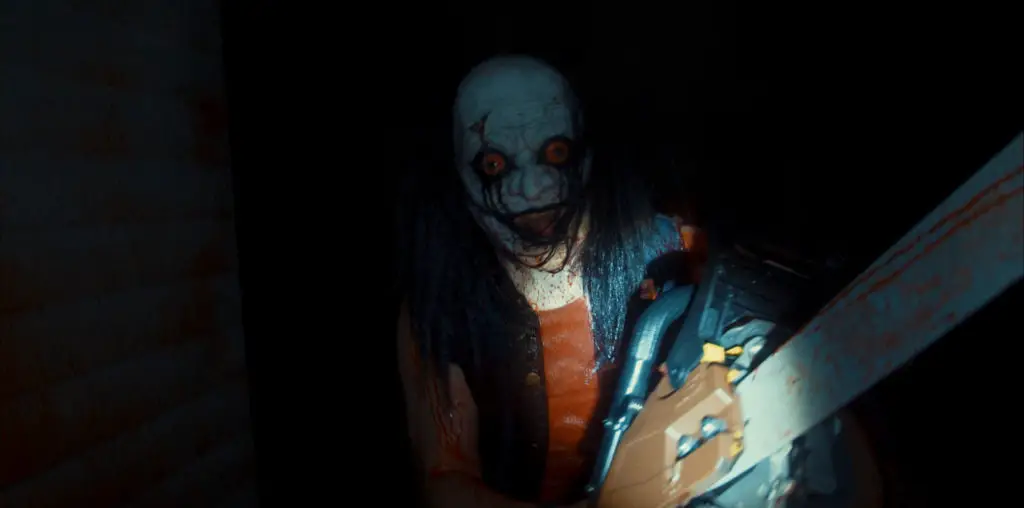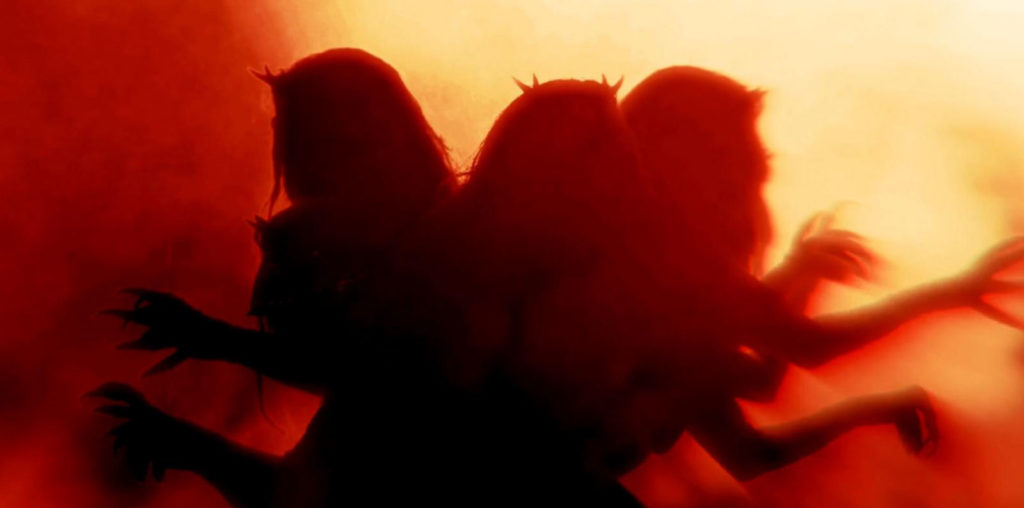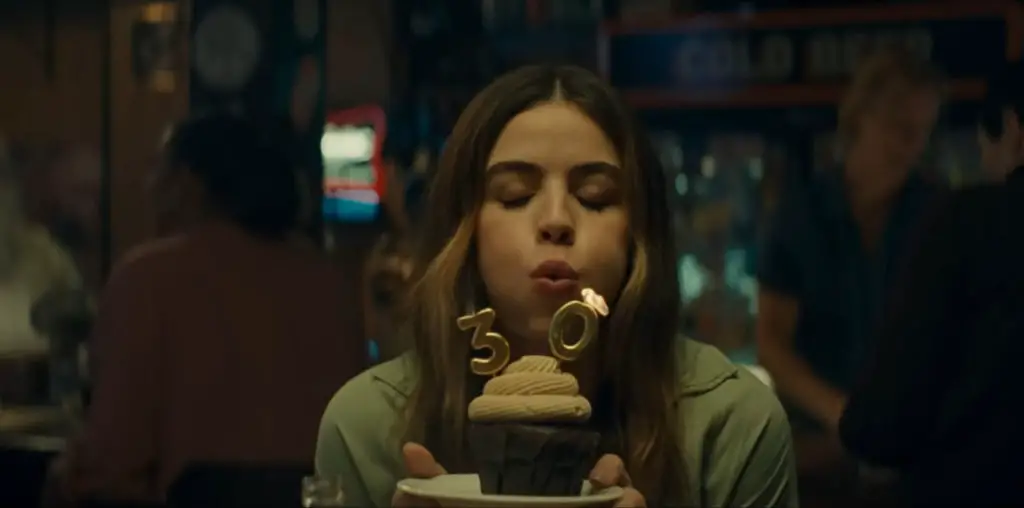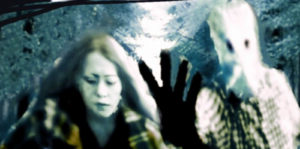
Written and directed by Mikomi, The Leaf is the “first movie ever about a haunted leaf.” Mikomi, who also has a part in the film and presumably served as director of photography, editor, and producer (the ending credits are sparse), clearly took plot inspiration from the nature gone amok titles that saw an uptick in the 1970s a la The Long Weekend. The filmmaker’s style, though, is a combination of experimental arthouse and the shot-on-video microbudgets from the late ’80s and early ’90s.
All who reside in Autumn Hill know about the Leaf Spirit. A boy loved the fall season so much that he collected all the leaves he could. One day, he leaped into a pile of them and scarred his face on the knotted roots hidden underneath. This led to his classmates making fun of him relentlessly. After his death, his leaf collection was put back into the forest so he could be closer to nature in a fashion. But now, should some hiker pick up the wrong leaf because it is so pretty, the boy’s spirit attacks and kills that person to get the leaf back. Such is the fate of Tracy Christo’s unnamed lead character, who went to the woods to meet a colleague who never showed up. She chances upon a particularly fetching leaf and takes it home. This innocuous act puts her in dire peril.
“…should some hiker pick up the wrong leaf because it is so pretty, the boy’s spirit attacks and kills that person…”
The first 5 minutes of The Leaf are quite terrible. The legend is explained in crude drawings, but they are so poorly edited in, and the static-y background they are atop distracts and makes the monochrome sketches very difficult to make out. Then there’s just endless clips of nature. A deer idly walks on and on… and on because? This has nothing to do with a leaf or the murderous spirit, so who knows? The first victim is very confusing, as he hadn’t even left the woods. So, are people just expected not to trample or pick up any leaves while hiking? Had the film explored the unknown element concerning how similar leaves from the same trees look, scares or tension could have arisen. But no, it’s just cheap overlays, over-editing, and the worst sound design heard in recent memory. It is just droning and draining and monotonous. It does not add anything to the experience, save maybe a headache if loud noises cause such an issue among audience members.
Mikomi uses digital effects to create the grain on the “film stock,” but it looks fake. It always appears to be an overlay, distancing the audience from what’s happening as there’s a constant reminder that this is a movie. Unfortunately, the director did not take the most essential part of the nature runs amok horror-thriller subgenre to heart: the natural cinematography should juxtapose the beauty of nature with the horrifying acts being done. But the overlays and hyperactive editing make that impossible. The shot-on-video features were not kindly received upon their initial release and, unlike some other genre movements, have not had a positive reappraisal because the poor visuals render a lot of them ugly. Mikomi’s feature suffers the same issue. The editing does no favors, often cutting randomly away to poorly framed trees or clouds (the graininess is not the only visual problem) instead of highlighting the action or following even a single haunted leaf in a POV manner.
The Leaf is not as artistic as its style mandates it be. Nor is it as tense as the narrative could or should be. Nothing here works, as the cinematography is poorly framed while the artificial grain and burns added in post-production don’t envelope so much as distract. But as an homage to shot-on-video features, this is almost perfect. The question then is: is that solely what Mikomi was hoping to achieve? Given the 80-minute runtime, it wouldn’t hurt any cinephiles to watch it for themselves and decide.
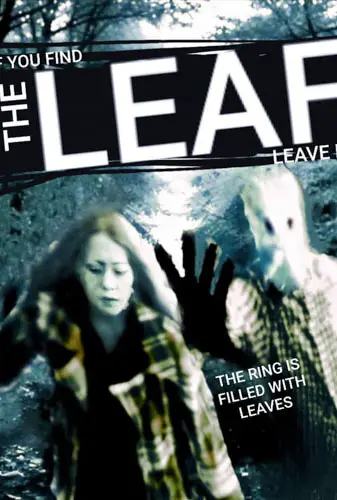
"…a combination of experimental arthouse and shot-on-video microbudgets..."
